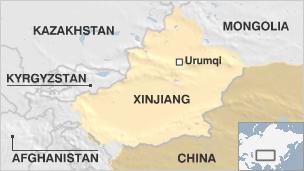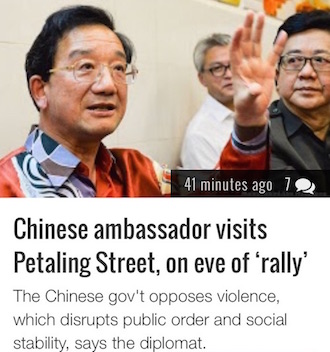Chinese ambassador visits Petaling Street on eve of rally
Why is there tension between China and the Uighurs?
The Xinjiang autonomous region in China’s far west has had a long history of discord between the authorities and the indigenous ethnic Uighur population. The BBC sets out why.
The largest of China’s administrative regions, Xinjiang borders eight countries – Mongolia, Russia, Kazakhstan, Kyrgyzstan, Tajikistan, Afghanistan, Pakistan and India – and until recently its population was mostly Uighur.

Most Uighurs are Muslim and Islam is an important part of their life and identity. Their language is related to Turkish, and they regard themselves as culturally and ethnically close to Central Asian nations.
The region’s economy has largely revolved around agriculture and trade, with towns such as Kashgar thriving as hubs along the famous Silk Road.
But development has brought new residents. In the 2000 census, Han Chinese made up 40% of the population, as well as large numbers of troops stationed in the region and unknown numbers of unregistered migrants.
Has Xinjiang always been part of China?
The region has had intermittent autonomy and occasional independence, but what is now known as Xinjiang came under Chinese rule in the 18th Century.
An East Turkestan state was briefly declared in 1949, but independence was short-lived – later that year Xinjiang officially became part of Communist China.
In the 1990s, open support for separatist groups increased after the collapse of the Soviet Union and the emergence of independent Muslim states in Central Asia.
However, Beijing suppressed demonstrations and activists went underground.


